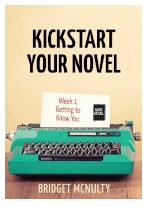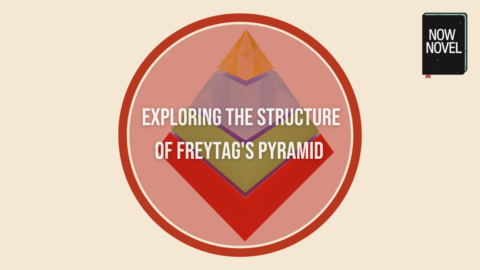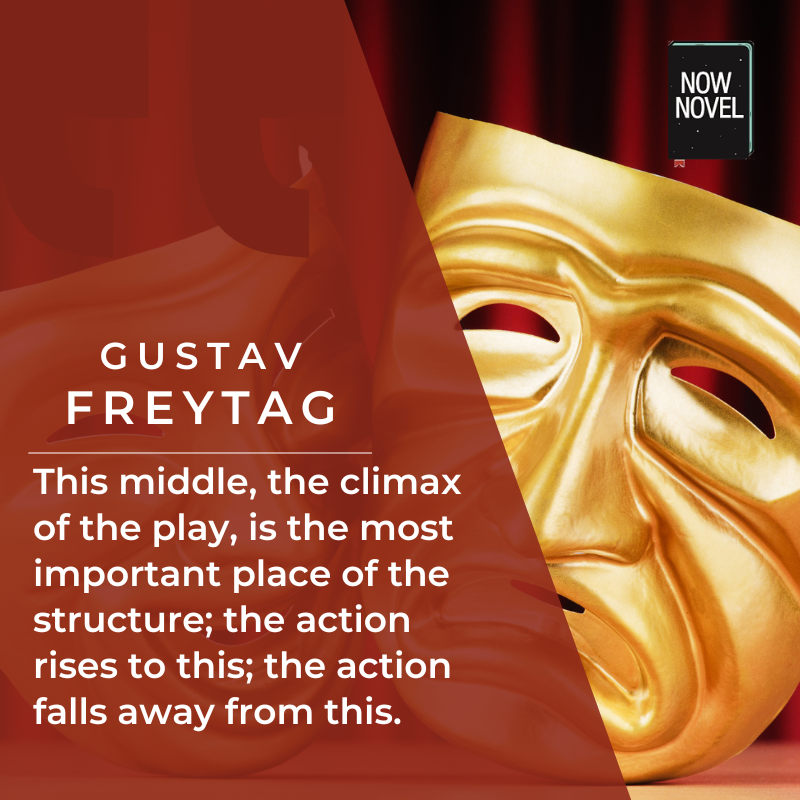Storytelling is at the heart of our human interactions. We tell stories when we talk to each other, explaining what has happened in our lives. We also pay money to consume stories in the form of movies, theatre, books and so on. So many stories use the Freytag’s Pyramid (or Triangle) method, and it’s worth looking at it in detail to see how you can use it in your own writing. Understanding the plot structure is a good way of engaging readers and creating compelling narratives.
So, what is Freytag’s Pyramid (or Triangle) and how can you use it to write fiction? Let’s explore this in more detail. You may have heard of it, as it’s a literary analysis mode that is spoken of often when exploring creative writing. It was named after Gustav Freytag, a 19th century German novelist and playwright who first devised it.
What is Freytag’s Pyramid?
Simply put the Freytag Pyramid is a narrative structure that breaks down a story arc into five sections or five acts. The five-act structure looks like this:
- exposition
- rising action
- climax
- falling action
- resolution/denouement
Freytag’s Pyramid is so called as it falls into a pyramid structure. Take a look at the structure here.
It’s a helpful way to order the series of events and plot your stories, and will ensure you have a recognisable beginning, middle and end in your story. It’s super useful to consult it. So many stories naturally follow this pattern anyway, as we’ll see in the examples below, and it’s good to have to it to hand and make a study of it. It’s an excellent way to figure out how a story unfolds. Using it helps you create a logical progression of events, and gives readers a sense of familiarity and satisfaction.
It’s important to note that although Freytag’s Pyramid is an extremely useful tool to use, be aware of the fact that it might not fit every story structure.
Tweet This
First, though, it’s important to note that although Freytag’s Pyramid is an extremely useful tool to use, be aware of the fact that it might not fit every story structure. Freytag devised his pyramid by looking at classical Greek tragedy and Shakespearean drama and observing how these plays were constructed. The Greek philosopher, Aristotle, was the first person to say that the structure of drama is shaped like a pyramid with a beginning, middle and end, what is known as the three-act story structure.
The downside is well explained on Reedsy:
Make no mistake: Freytag’s pyramid is not a one-size-fits-all structure. It identifies story elements that are common to classical and Shakespearean tragedies, including a revelation or plot twist that changes everything — resulting in catastrophe for the hero. As a result, the pyramid is less applicable to non-tragic narratives in which the protagonist usually wins out in some way, or when writing more upbeat genres like comedy.
We’ll look at how these can be seen in literature, and will drill down into the nitty gritty of each section of this narrative tool.
Exposition
This is where the stage is set: the author introduces the main characters, setting and milieu of the story. It’s here that the characters’ backgrounds, motivations and circumstances are introduced. This is also where, most likely, you will show the reason for the story. In other words, in this section the writer will establish the central conflict or problem that the protagonist will face in the story.
Thematic concerns will be introduced here as well, as well as hints of what character development might occur in the narrative.
Your exposition should end with the ‘inciting incident’ – that’s what will start the ball rolling in the narrative, or set off the events of your story.

Transform Your Story
Explore the depths of Freytag’s Pyramid with our coaching package. Receive personalized guidance to structure your novel, develop compelling plots, and create memorable characters. A story coach will help you navigate the intricacies of storytelling, ensuring your novel reaches its full potential.
Get CoachedRising action
The inciting incident occurs in this section. Ideally this section should occur quite early in your story. You don’t want to have reams of exposition here. You can always weave in backstory and more as the story progresses. The inciting incident is the event that disrupts the status quo and sets the main conflict of the story in motion. The protagonist is now faced with a problem, challenge or dilemma that they must solve.
Read more on the topic of rising action as well as as in the Freytag Pyramid.
Climax
This is pivotal to your story. Tension ratchets up a few notches. The plot becomes more complex now. This is very often the turning point in your story. The conflict escalates as the protagonist encounters obstacles, and faces challenges. Layer on the problems here, which increases suspense and serves to well and truly engage your readers. They should have been hooked from the beginning, from the time you introduced the problems your characters will face.
This is also the chance to include subplots and foreshadowing and backstory. This is where the reader will learn more about your characters, their motivations and conflicts, the themes of the stories, as well as more details about the setting. This could also see the introduction of new characters which will add more complexity.
As Freytag said over at The Write Practice, ‘This middle, the climax of the play, is the most important place of the structure; the action rises to this; the action falls away from this.’
Falling action
In this section you start to tie up the loose ends, as your story heads toward its conclusion. Explore how your characters react to the conflicts set out earlier in the story. Conflict between protagonist and antagonist will reach a crescendo or a conclusion here. A decision might need to be made by the main character now. The themes that have been explored in the story may now come together and can be further explored in this section. Conflicts will be resolved, and the plotlines should start to be tied up. This prepares readers for the resolution.
5. Resolution/denouement
This is the final part of the story, where the central conflict is resolved, and the aftermath of the climax is explored. It provides closure by answering any lingering questions, resolving character arcs, and reflecting on the broader themes of the story. This is the ‘satisfying’ part of the story, where readers will be left with a sense of closure, or fulfilment. In a romance the couple will get together, or the murderer will be found.

Stuck on structuring scenes?
Our free guide on How to Write Scenes complements your understanding of Freytag’s Pyramid, offering insights into crafting scenes that propel your story forward with momentum and purpose.
Learn moreLet’s look at some examples from literature to see how this plays out in reality in two classic novels.
Spoiler alert warning though!
1984 by George Orwell
Exposition: The exposition introduces the dystopian society of Oceania, ruled by the oppressive Party led by Big Brother. The protagonist, Winston Smith, works for the Party’s Ministry of Truth, where he alters historical records to fit the Party’s propaganda.
Inciting incident: The inciting incident occurs when Winston begins to rebel against the Party’s control by secretly purchasing a diary and writing his forbidden thoughts against the regime. This act of defiance sets Winston on a dangerous path of resistance.
Rising action: The rising action follows Winston as he becomes increasingly involved in anti-Party activities, including a forbidden love affair with Julia. Together, they join the Brotherhood, an underground resistance group, and attempt to undermine the Party’s authority.
Climax: The climax occurs when O’Brien, a member of the Inner Party, sets a trap for Winston and Julia; they believed to be sympathetic to their cause. They are arrested and tortured in the Ministry of Love, where Winston’s spirit is broken, and he betrays Julia.
Falling action: The falling action depicts Winston’s acceptance of the Party’s ideology and his complete submission to its authority. He is released back into society, utterly defeated and stripped of all rebellious thoughts.
To Kill a Mockingbird by Harper Lee
Exposition: The exposition introduces the readers to the town of Maycomb, Alabama, during the Great Depression. We meet Scout Finch, her brother Jem, and their father Atticus, a lawyer. The social hierarchy and racial tensions of the town are established, as well as the mysterious neighbor Boo Radley.
Inciting incident: The inciting incident occurs when Atticus agrees to defend Tom Robinson, a black man falsely accused of raping a white woman named Mayella Ewell. This decision sets off a chain of events that exposes the prejudice and injustice in Maycomb.
Rising action: The rising action follows Scout and Jem as they navigate the complexities of race and morality in their community. They witness Atticus facing backlash for defending Tom Robinson, experience harassment from the racist Bob Ewell, and gradually come to understand the true nature of Boo Radley.
Climax: The climax of the story is the trial of Tom Robinson. Despite Atticus’s compelling defense and the overwhelming evidence of Tom’s innocence, the all-white jury convicts him solely because of his race. This moment is pivotal as it exposes the deep-rooted racism and injustice prevalent in Maycomb.
Falling action: The falling action deals with the aftermath of the trial. Tom Robinson is killed while seemingly trying to escape from prison, and Bob Ewell seeks revenge on Atticus’s children. Boo Radley, who has been watching over Scout and Jem, saves them from Bob Ewell’s attack, revealing himself as a compassionate and misunderstood figure.
Here is another look at how Freytag’s Pyramid can be used in crafting stories and creating compelling plotlines.
Start Your Story Strong
Sign up to our Kickstart your Novel Course and write your story! Shape your narrative with expert guidance, ensuring your story’s foundation is as solid as its structure.
Get started


